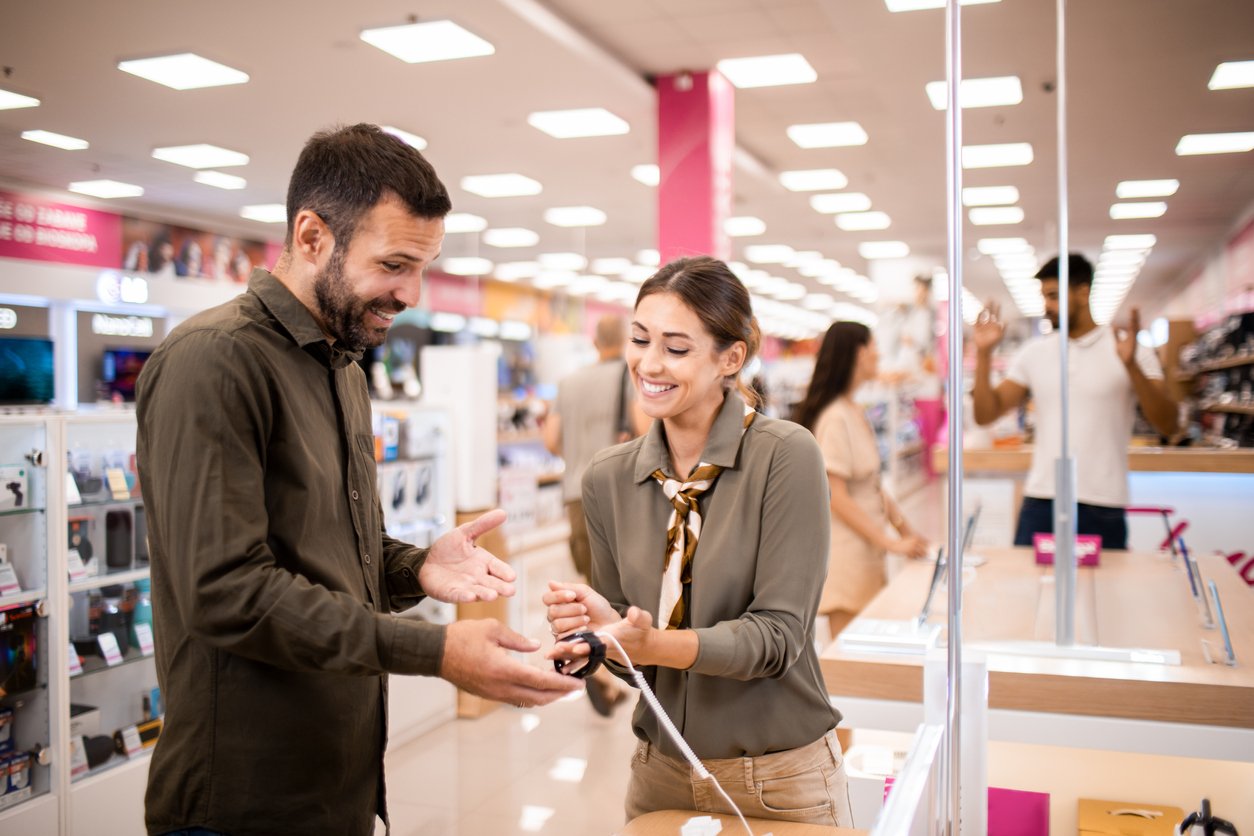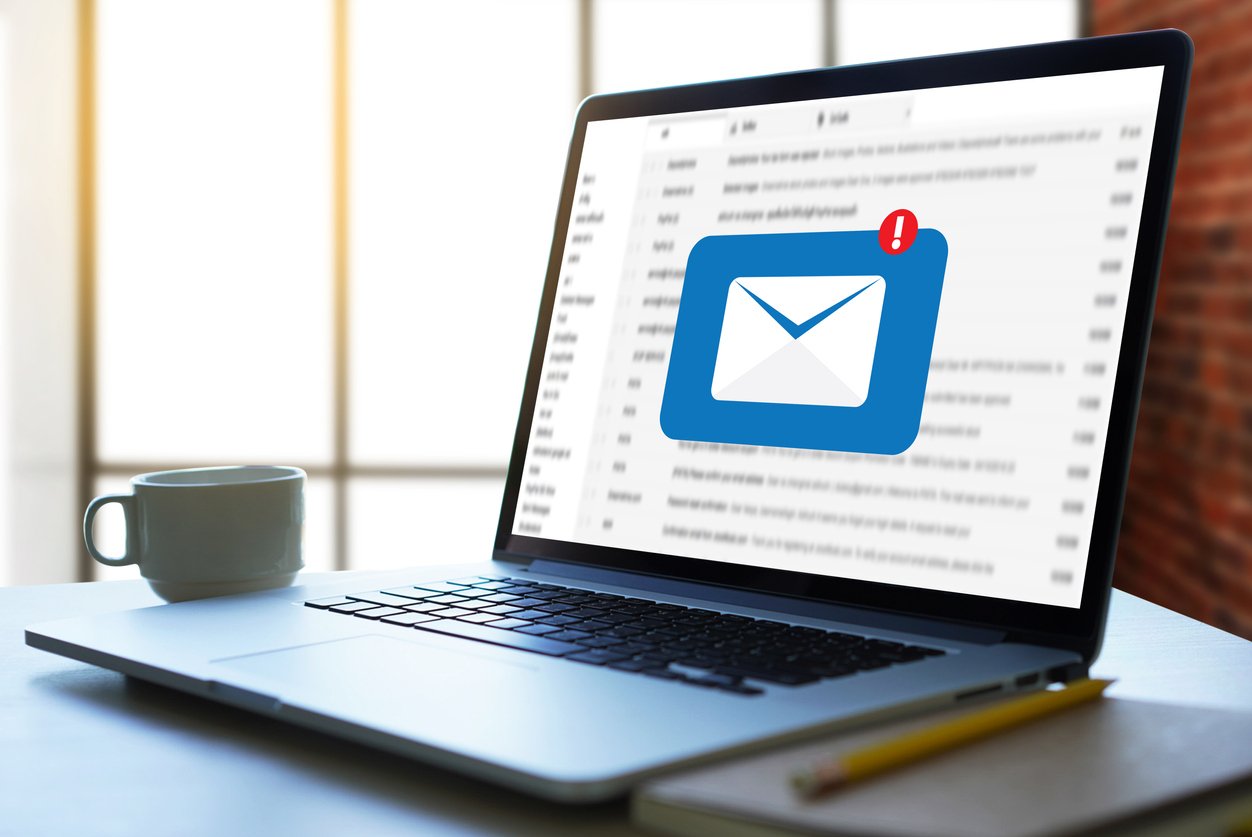
Stop Spam Risk Flags on Sales Calls with These Tips
 Updated on
Updated on
 By Carlos Correa
By Carlos Correa
Carlos Correa
Carlos has been involved in the sales space for well over ten years. He began in the insurance space as an individual sales agent, managing teams as s...
learn more
Carlos Correa
Carlos has been involved in the sales space for well over ten years. He began in the insurance space as an individual sales agent, managing teams as s...
Table of Contents
Table of Contents
You've done the research, prepped your pitch, and found the perfect lead. You dial the number with the confidence of a closer, only to hear the click of an immediate hang-up or a guarded, suspicious "Hello?" on the other end.
What went wrong?
There's a good chance your number appeared on their screen with a scarlet letter for the digital age: Spam Risk.
This little flag is more than just an annoyance. It's a lead-killer, silently sabotaging your outreach efforts before you even say a word.
If you're tired of your calls being ignored and want to understand why your number is being flagged, and more importantly, how to fix it, you've come to the right place.
Let's peel back the curtain on call labeling and get your number back in the clear.
What Is a Spam Risk Call?

A spam risk call is an incoming phone call that your mobile carrier or a third-party app has automatically flagged as potentially being an unwanted robocall, a telemarketer, or a scammer.
In simpler terms, spam risk calls are warnings designed to protect you from unwanted interruptions, scams, or data theft. But the system isn't perfect.
Legitimate companies, recruiters, and even small business owners making genuine outbound calls can sometimes be mislabeled as spam risk numbers, costing them valuable opportunities and credibility.
What Does Spam Risk Mean on Your Caller ID?
When your caller ID says "Spam Risk", it's your carrier's way of saying, "Proceed with caution." Mobile carriers like AT&T, Verizon, and T-Mobile use real-time analytics and shared databases to flag numbers based on:
- High Volume of Outbound Calls: If a single number is making hundreds or even thousands of calls in a short period, it looks less like a person and more like an automated dialer.
- Being Reported or Blocked: When enough people report a number as spam or block it, carriers take notice. Your "block" button is a vote against that number.
- Short Call Duration: Legitimate conversations usually last more than a few seconds. Numbers that consistently have very short calls (because people hang up immediately) are flagged as likely being unwanted.
- Unregistered Numbers: Businesses can register their numbers with carriers to verify their identity. Unregistered numbers used for high-volume calling are immediately suspicious.
So, the spam risk meaning is essentially a predictive warning based on data. It's your network provider acting like a digital bouncer, checking IDs at the door and letting you know who looks sketchy.
What Is Spam Risk on iPhone and Android?
Both iPhone and Android users see spam risk alerts differently, but the purpose is the same: to help users identify unwanted calls before answering.
- On iPhone: Apple uses carrier data (from AT&T, Verizon, T-Mobile, etc.) and built-in spam filters to show labels like "Spam Risk," "Scam Likely," or "Potential Fraud." You can also enable Silence Unknown Callers, which sends unidentified numbers straight to voicemail.
- On Android: Devices often rely on Google's caller ID and spam protection system, which flags suspicious calls and offers options to block or report them. Brands like Samsung or Pixel integrate these warnings directly into the phone app.
If you're getting frequent spam risk calls, or your own number shows up as spam risk on someone else's phone, that's a sign something needs fixing. Understanding how these labels work is the first step toward preventing false flags and keeping your calls from being ignored.
What Happens When Your Business Number Gets Flagged as Spam Risk

When your outbound sales number gets slapped with a spam risk label, it's a direct blow to your entire sales funnel, undermining your efforts before your team can even deliver their opening line.
Here's a breakdown of the damage a spam risk flag can do:
1. Plummeting Answer Rates
This is the most immediate and obvious impact. Let's be honest, would you answer a call from a number labeled "Spam Risk"? Probably not.
You're not alone. A recent study revealed that 79% of unidentified calls go unanswered. When your number is actively flagged as a potential threat, that answer rate plummets even further. Your valuable, well-researched leads will ignore you, sending your calls straight to the digital voicemail graveyard.
2. Damaged Brand Reputation
When your company's first touchpoint with a potential client is a warning label, it instantly erodes trust. The prospect doesn't see a helpful consultant or a solutions provider; they see a potential scammer.
This spam risk call meaning in their minds is "untrustworthy." It associates your brand with the millions of annoying and fraudulent calls they get every month, making it incredibly difficult to establish credibility later on.
3. Wasted Time and Resources
Every call that goes unanswered is a waste of your most valuable assets: your team's time and your company's money. Think about the costs involved:
- The salary of the sales rep making the dial.
- The marketing budget spent to generate that lead.
- The overhead costs of your CRM and dialing software. When your number is flagged, you're essentially paying your team to listen to the phone ring. This inefficiency drives up your cost-per-acquisition and can severely demoralize your sales staff.
4. Your Conversions and Pipeline Shrink
Every stage of the sales funnel feels the impact:
- Fewer connections mean fewer demos or consultations booked.
- Lower engagement rates lead to missed follow-ups and slower deal velocity.
- Reduced trust decreases your close rates and customer retention.
All these cause revenue to slip away, not because of your team's skills, but because your calls never had a fair chance.
Why Your Legitimate Business Calls Might Be Flagged For Spam

So, you run a legitimate business, your sales team is top-notch, and you aren't trying to sell anyone an extended car warranty. Yet, your number still gets the dreaded spam risk label. It's frustrating, but it's often algorithmic.
Your calling habits, even with the best intentions, may be accidentally mimicking the patterns of actual spammers, tripping the invisible wires of carrier networks.
Let's break down exactly what triggers these flags and why your number might be getting caught in the crossfire.
What Does Spam Risk Mean for Outbound Callers?
For outbound sales, recruiting, or customer success teams, a spam risk label means your calls are being filtered before they even reach your prospects. The moment carriers or analytics platforms detect unusual call activity, your number can get flagged without any warning or notice.
Here's the catch: once your number is tagged as spam risk, your contact rate can drop by 60–80% overnight. That's a serious blow to businesses that depend on phone outreach to build relationships, qualify leads, or offer support.
In short, what spam risk means for outbound callers is this: the system doesn't distinguish between a legitimate sales team and a robocall operation because it only sees data patterns.
How Spam Filters Flag Phone Numbers
Mobile carriers, in partnership with analytics companies, constantly monitor call traffic across their networks. They use sophisticated systems to identify patterns that suggest spam or fraud. When a number's activity matches a known spam profile, it gets flagged.
This process is fueled by a few key data sources:
- Carrier Algorithms: The network providers themselves have powerful, built-in analytics to detect suspicious activity.
- User Feedback: Every time a user blocks your number or reports it as spam via their phone's built-in features, it counts as a negative vote against you.
- Third-Party Apps: Data from popular apps like Truecaller and Hiya, which have millions of users reporting numbers, is often shared with carriers to enhance their detection capabilities.
Common Triggers
Even legitimate businesses can fall into spam filters for innocent reasons. Below is a quick overview of the most common triggers that cause spam risk calls and why they matter:
|
Trigger |
Why It Looks Suspicious |
Why It Matters |
|
High Call Volume |
Spammers use auto-dialers to blast out thousands of calls per hour from a single number. This high-frequency activity is the biggest red flag. |
Carriers interpret this as automated dialing, which often mimics robocall behavior. |
|
Low Callbacks |
Spammers often use spoofed numbers that can't be called back. A number that makes hundreds of outbound calls but receives almost no inbound calls looks like a dead-end, one-way operation. |
Low callback rates suggest recipients find the calls untrustworthy or irrelevant. |
|
Lack of Caller ID Registration |
A number with no name attached (CNAM) appears as "Unknown" or just digits. Legitimate businesses are expected to register their numbers so their name appears. Scammers rarely do. |
Unverified numbers are automatically deemed higher risk since there's no confirmed business identity. |
When multiple triggers stack up, your number's reputation score drops, and that's when "Spam Risk" starts appearing on caller IDs across different networks and devices.
STIR/SHAKEN and Call Authentication Explained
To combat spam and caller ID spoofing, the FCC introduced STIR/SHAKEN, a nationwide call authentication framework. In simple terms, it helps carriers verify that the number appearing on your caller ID is genuinely yours and not being faked by a scammer.
Here's how it works:
- STIR (Secure Telephone Identity Revisited) and SHAKEN (Signature-based Handling of Asserted information using toKENs) use digital certificates to validate caller identity.
- When you place a call, your carrier "signs" it with a digital token that says, "This number is legitimate."
- The receiving carrier checks the signature before allowing the call to go through without a warning label.
Without STIR/SHAKEN authentication, your calls are far more likely to be treated as spam risk calls, even if your business is completely legitimate. That's why registering your numbers and ensuring your provider supports authenticated calling is one of the most effective ways to protect your reputation.
How to Check If Your Business Number Is Flagged as Spam

If your answer rates have suddenly dropped off a cliff, it's time to play detective. You can't fix a problem you haven't diagnosed. Fortunately, there are several ways to check your number's reputation across the major carriers and see if you've been unfairly labeled.
Spam Risk Phone Number Lookup Tools
The most direct way to check your status is by using a spam risk phone number lookup service. Several companies offer tools that allow you to enter your phone number and see how it's being flagged across the major mobile networks.
These platforms scan your number against the databases used by carriers and third-party apps, giving you a comprehensive reputation report. This will show you if you are appearing as "Spam Risk," "Telemarketer," or even "Potential Fraud."
Using Call Feedback and Call Labeling Services
Beyond just checking, you can proactively register your business numbers with call analytics companies that partner with the major carriers. Services like First Orion, Hiya, and TNS work with carriers to help legitimate businesses verify their identity.
By registering your numbers and providing details about your company, you create a profile of legitimacy. This not only helps prevent future flags but also gives you a channel to remediate a negative label if one is applied incorrectly.
Signs Your Number May Be Blocked or Going Unanswered
Even without specialized tools, your own data can tell you a story. Look for these tell-tale signs that point to a potential spam risk flag:
- A Sudden Drop in Answer Rates: This is the biggest giveaway. If your connection rate falls by 20% or more overnight with no other changes to your strategy, your number has likely been flagged.
- An Increase in Voicemail Drops: Are more of your calls going straight to voicemail without even ringing? This can be a sign of automatic call blocking or filtering by the carrier or the user's device settings.
- Direct Feedback from Prospects: Occasionally, a friendly prospect will tell you, "Your call came up as 'Spam Risk,' but I answered anyway." Treat this feedback as a valuable data point, because it's definitive proof.
How to Prevent Spam Risk Flags on Outbound Sales Calls
Now for the most important part: staying off the blocklist. Preventing the spam risk label is far easier than trying to remove it. It requires a strategic, mindful approach to your outreach that prioritizes reputation just as much as volume.
Tips for Maintaining a Clean Caller Reputation
Adopt these best practices to keep your numbers healthy and your calls connecting:
- Pace Your Calls: Avoid making a huge number of calls from a single phone number in a short time. Use software that can distribute calls across a pool of numbers to keep the volume per number under the carriers' radar.
- Warm-Up New Numbers: Don't take a brand-new number and immediately make 150 calls. Start with a low volume (20-30 calls/day) and gradually increase it over a week. This mimics human behavior.
- Enable Callbacks: Use numbers that can receive inbound calls. A number that only makes outbound calls is a huge red flag. When prospects can call you back, it signals legitimacy.
- Encourage Engagement: When you do connect with a lead, encourage them to save your number in their contacts. This effectively whitelists you for that person, and positive interactions can improve your number's reputation.
Use of Branded Caller ID/CNAM Services
One of the most powerful ways to build trust is to replace "Spam Risk" with your company's name and logo. Branded Caller ID services (an evolution of traditional CNAM) push your business name, logo, and even the reason for the call (e.g., "Account Follow-Up") directly to the recipient's screen.
Studies have shown this can increase answer rates by over 50% because it replaces uncertainty with clear, trusted information. It's a direct way to tell the carrier and the customer that you are a legitimate entity.
Rotate Call Numbers Strategically (Without Spamming)
If your team makes a high volume of sales calls daily, using number rotation can help distribute the load and reduce the risk of overuse flags. However, the goal is balance, not blasting calls from multiple unverified lines.
Best practices include:
- Using a pool of verified numbers instead of one overused line.
- Ensuring each number has proper STIR/SHAKEN authentication.
- Avoiding repeated calls to the same contact from different numbers within short timeframes.
This keeps your calling activity natural and prevents any single line from being labeled as spam risk.
Balance Between Calls, SMS, and Emails in Outreach Strategy
Finally, relying solely on calls increases the risk of being flagged by spam filters. Diversifying your communication mix, using email, SMS, and social touchpoints, not only strengthens engagement but also reduces call volume concentration.
A well-balanced outreach cadence might look like:
- 1 phone call → 1 follow-up email → 1 SMS reminder spread over several days.
This multichannel strategy builds trust, improves response rates, and minimizes the chance your business number gets caught in a spam risk filter again.
How Ringy Helps You Avoid Spam Risk Issues

If your team depends on outbound calls to close deals, schedule demos, or follow up with leads, Ringy gives you a serious advantage. Our platform is designed to help businesses avoid spam risk flags while keeping outreach natural, authentic, and compliant.
From smarter dialing practices to proactive number monitoring, Ringy provides built-in protection against the issues that cause legitimate calls to be mislabeled.
Local Presence Dialing Without Triggering Filters
Ringy's Local Presence Dialing feature automatically uses a local area code that matches your prospect's region. This increases the likelihood of your call being answered, and studies show that local numbers are 400% more likely to be picked up than toll-free or unfamiliar area codes.
As a result, you can reach more leads using trusted local caller IDs, without falling into the spam trap.
Automated SMS and Email Follow-Ups to Support Contact Rates
One of the smartest ways to reduce spam risk calls is by balancing your outreach across multiple channels. Ringy's built-in automation lets you follow up every missed call with an SMS or email, keeping your engagement rate high even if the prospect doesn't answer immediately.
Benefits include:
- Improved contact rates
- Consistent outreach
- Reduced call pressure
This automation ensures your legitimate outreach feels organic and customer-friendly, never pushy or spammy.
Built-In Call Tracking + Flag Detection
Ringy doesn't just help you make more calls. It helps you monitor your caller reputation in real time. With built-in call tracking and spam flag detection, you can:
- Identify when a number is at risk of being labeled as spam risk before it affects performance.
- Replace or re-register flagged numbers immediately.
- Track call outcomes and answer rates by number, campaign, or team member.
This proactive visibility means you stay ahead of carrier filters and protect your brand's credibility on every call.
How to Stop Incoming Spam Risk Calls (and Protect Your Business Lines)
While it's crucial to protect your outbound reputation, you also need to shield your own business lines from the daily flood of unwanted calls. Whether you're an individual or a business, here are the actionable steps you can take to stop spam risk calls.
How to Block Spam Risk Calls on iPhone and Android (for Individual Users)
Your smartphone has powerful, free tools built right in to help you manage these interruptions.
- On iPhone: Go to Settings > Phone > Silence Unknown Callers. This feature automatically sends any call from a number not in your contacts, recent calls, or Siri Suggestions straight to voicemail. It won't ring, but you can still see the call in your recents list.
- On Android: Open your Phone app > Settings > Caller ID & spam. Ensure this is turned on. You can also enable "Filter spam calls," which prevents suspected spam calls from ever ringing your phone.
Carrier Tools (AT&T, Verizon, T-Mobile) and Business Call Monitoring
The major mobile carriers offer free (and premium) services to help their customers combat spam. Businesses can also leverage these tools to protect their phone systems.
|
Carrier |
Service Name |
Key Features |
|
AT&T |
AT&T ActiveArmor |
Blocks spam and fraud calls automatically, labels suspicious numbers, and allows custom blocking preferences. |
|
Verizon |
Call Filter |
Identifies and blocks spam risk calls, provides a risk meter, and lets users report or whitelist numbers. |
|
T-Mobile |
Scam Shield |
Offers free scam blocking, caller verification, and number registration for verified businesses. |
For companies, these tools can be paired with call monitoring software like Ringy or third-party dashboards to track inbound and outbound call integrity.
Re-registering Business Numbers with Call Labeling Authorities
If you discover your legitimate business number has been incorrectly flagged as spam risk, you can appeal the decision. You can register your numbers with the analytics companies that provide data to the major carriers.
Portals like the Free Caller Registry allow you to submit your business information and phone numbers for multiple services at once. This tells the authorities who you are and that your calls are legitimate, which can help remove an incorrect flag and whitelist your numbers for the future.
Conclusion
Success is no longer just about having a great product or a perfect pitch. It's about ensuring your message can be delivered. This requires a shift from a brute-force dialing strategy to a nuanced approach that includes strategic number rotation, omnichannel warming with email and SMS, and proactive reputation management.
That's where Ringy makes all the difference. With built-in local presence dialing, automated multi-channel follow-ups, and real-time spam flag monitoring, Ringy helps your outreach stay authentic, compliant, and effective, without risking your reputation.
Don't let "Spam Risk" warnings get in the way of your sales momentum. Schedule a demo with Ringy today and get your calls back in the clear.

Skyrocket your sales with the CRM that does it all.
Calling? Check. SMS? Check. Automation and AI? Check. Effortlessly keep in touch with your customers and boost your revenue without limits.

Take your sales to new heights with Ringy.
Sales in a slump? Ringy gives you the tools and flexibility you need to capture leads, engage with them, and turn them into customers.
Subscribe to Our Blog
Enter your email to get the latest updates sent straight to your inbox!
Categories
Related Articles




































































































